
We’ve all heard of hammerhead sharks and anyone familiar with the movie Finding Nemo has also gotten a glimpse of the Blacktip shark with its serrated teeth jutting out. Sharks have been a culturally designated to inspire fear and terror in people. Great White Sharks are, of course, the true predators of the ocean that we actively work to avoid. Thanks to movies like Jaws, we know to run screaming when we see a fin jutting out of the water. However, it’s important to remember that there are nearly 450 different species of sharks that have been identified in waters across the planet.
With this many types of sharks out there, all playing a major role in our global ecosystem, it stands to reason that a heavy chunk of them are likely to be non-aggressive species, at least when it comes to human beings! In fact, out of the nearly 500 species of sharks, less than 20 actually pose any kind of danger to humans. These beautiful hunters of the sea enjoy living simple lives in the ocean, away from the presence of humankind, and are of little to no threat to people, even when swimming in their waters. While it is always important to exercise caution in shark-infested waters, these gorgeous seafarers can be friends to humans and are the least dangerous sharks in the world!
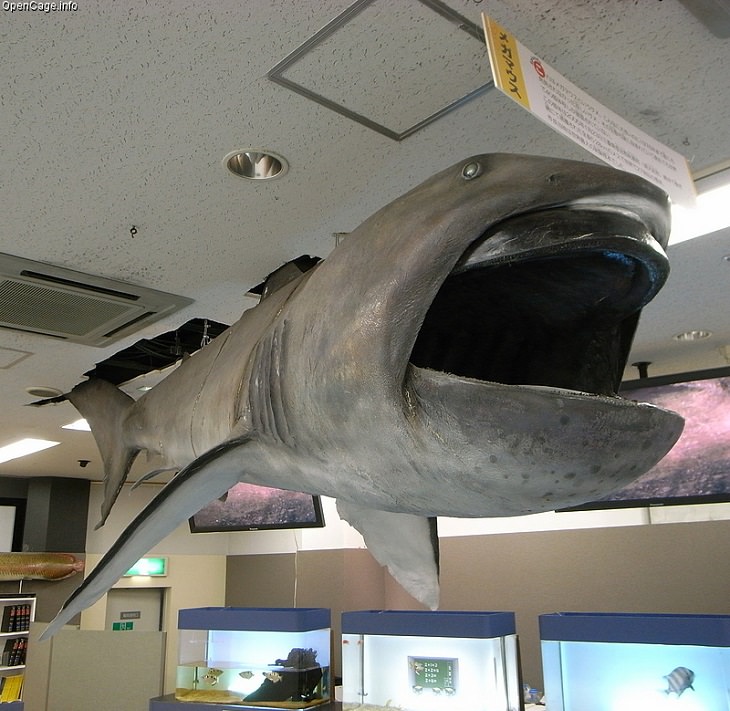
(By opencage, Wikimedia Commons)
We’ve understood the mouth of the shark to be the most dangerous part, so naturally, a shark named “megamouth” would conjure up some truly frightening images. However, while the mouth of this shark is extremely large, its teeth are extremely small. In fact, this shark is one of three species of filter-feeding sharks, as it uses its mouth as a vacuum to filter water for jellyfish and plankton which constitute the main diet of this species.
It was first discovered only in 1976 and since then, less than 100 specimens of this shark have been seen across the Indian, Pacific, and Atlantic Oceans. Not only are your chances of running into this shark extremely low, it is even less likely to ever attack.
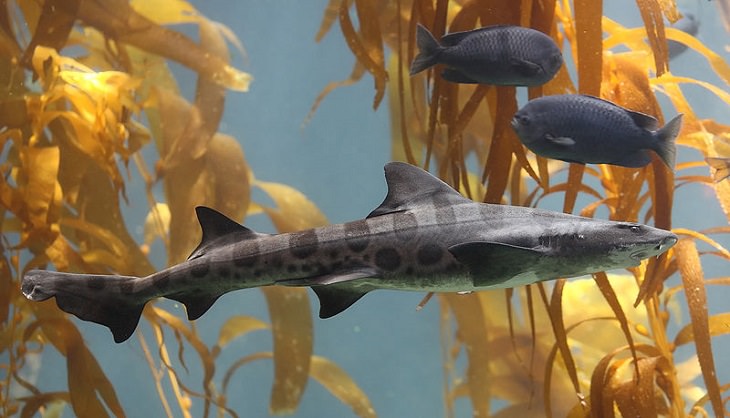
(By Mfield, Wikimedia Commons)
The leopard shark is a species of houndshark found largely along the Pacific coast of North America, stretching from the state of Oregon down to Mexico. They can be easily identified by the black leopard-like spots and markings on its back.
Leopard sharks usually reside in large schools in shallow muddy waters of bays and estuaries. While they are active predators, they feed primarily on shrimp, fish eggs, clams, spoon worms, and other small animals that are found in the mud. Leopard sharks are known for swimming away when approached by humans.
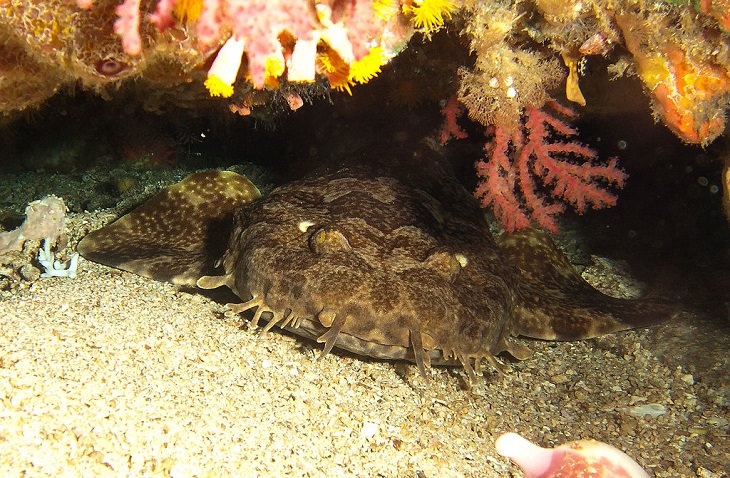
(By prilfish, Wikimedia Commons)
Wobbegong sharks refer collectively to a family of 12 different species of carpet sharks that can be found across the coasts of Australia and Indonesia in the Indian and Pacific Oceans. Unless you spend a lot of time walking across the ocean floor, you’re unlikely to ever run into this particular family of sharks.
The name “carpet shark” has been designated to this range of species because of its unique flat appearance. Their backs are covered in ornate intricate patterns which act as a form of camouflage. They lay in absolute stillness at the bottom of the ocean waiting for prey to swim just a little too close. If you do happen to partake in the occasional deep-sea diving adventure, keep an eye out for these guys, because they do bite though non-fatally.
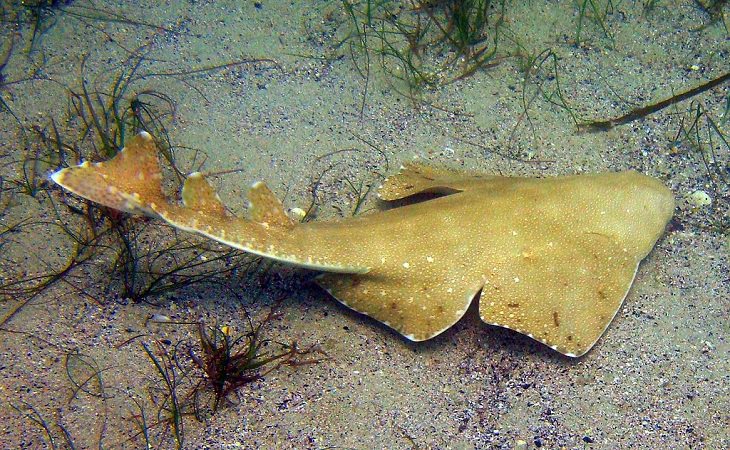
(By Nick Long, Wikimedia Commons)
This family of sharks was once found scattered all across the Northeast Atlantic Coast, onward to the Mediterranean and Black Seas. Now, due to excessive fishing practices, the species in this family have been listed as Critically Endangered under the IUCN Red List. Much like carpet sharks, their flat streamlines bodies help them to camouflage on the sandy floor of the ocean. This is how the angelshark catches its prey, which usually consists of smaller fish, as well as crustaceans and mollusc.
While these sharks are highly unlikely to ever approach humans, they have been known to bite divers and swimmers that have accidentally stepped on them or too close. This injuries, while not lethal, can be very painful as they have rather sharp teeth.
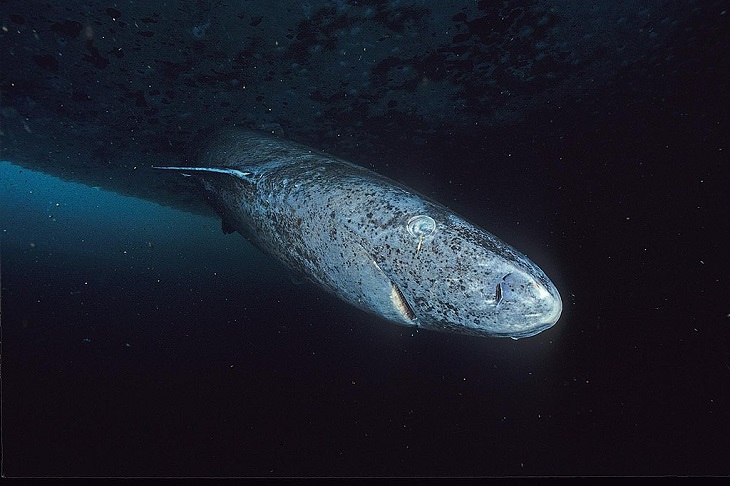
(By Hemming1952, Wikimedia Commons)
Found solely in the North Atlantic and Arctic Oceans, this fish is a species of sleeper sharks, a family known for their somewhat slower and more sluggish movements. The Greenland shark is in fact among the slowest of the sleeper sharks, making it quite the opposite of the usually speedy predators we’re used to picturing sharks as. Despite its slow speed, the Greenland shark has been known to feed on other smaller sharks and a wide variety of large and small fish.
These sharks usually prefer to stay in the dark and cold depths of the ocean. There have been no recorded incidents of the Greenland shark every attacking humans. However, there have been some reports of Greenland sharks disrupting kayaks while in the water.
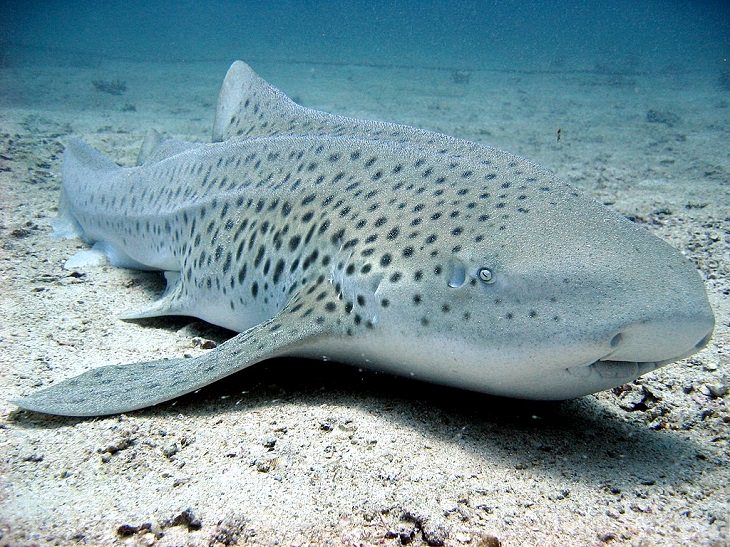
(By Sigmund, Wikimedia Commons)
The zebra shark is another species of carpet shark known for its spots and distinct cylindrical markings all around its body. They usually frequent sandy flats and coral reefs and spend their days resting on the floor of the ocean. As nocturnal animals, they hunt for their prey actively at night, which usually consists of mollusc, small fish, and crustaceans.
Zebra sharks tend to be indifferent and often friendly around humans, making them a major part of ecotourism in places where these sharks are kept in captivity. Divers and swimmers also prefer to select areas that have high populations of zebra sharks, specifically the tropical waters of the Indo-Pacific ocean, as they are peaceful sharks to swim with.
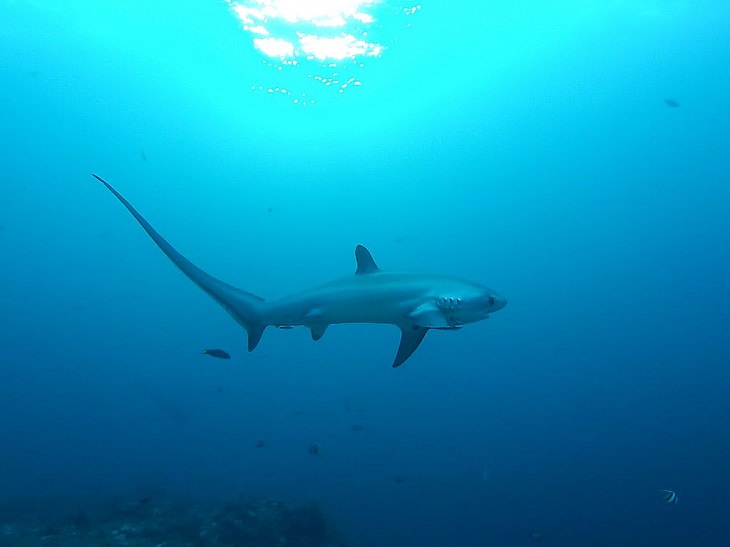
(By Thomas Alexander, Wikimedia Commons)
Species in the Thresher shark family can be easily identified by their extremely long tail fins that help them swim at rapid speeds. These fins also make thresher sharks incredibly prolific predators, not only because of their increased speed but also because they can be used to whip passing prey. The thresher sharks' powerful jaws and sharp teeth help finish the rest of the job.
Thresher sharks, while aggressive to other ocean-dwellers usually prefer to stay away from humans. There have only been 5 recorded thresher shark attacks in history, and 4 of those occurred after a thresher shark had been captured and brought aboard a passing fishing ship. Without provocation, these sharks are happy to keep to themselves. They have been listed as vulnerable to extinction.

The Goblin shark is a species that has been classified as a living fossil and is the only still-living species in the shark family Mitsukurinidae. They can be found at depths of 350 feet or greater, going deeper the older they get. Goblin sharks usually reside in seamounts, submarine canyons, and upper continental canyons across the Atlantic and Indo-Pacific Oceans as well as the region of Oceania.
They are not especially fast swimmers and usually feed on dragon fish and rattails that also frequent the deeper parts of the ocean. Since this species spends a majority of their lives at extreme ocean depths, they pose little to no threat to human beings.
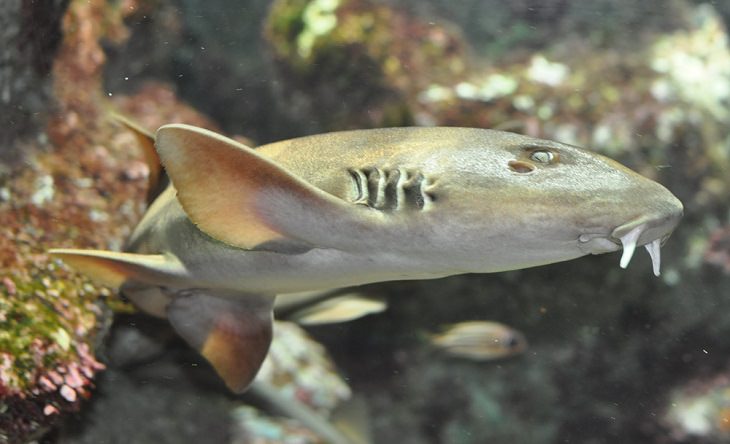
(By © Citron, Wikimedia Commons)
This unique family of sharks also goes by the common name longtail carpet sharks and are found solely in the Indo-Pacific ocean, along the coasts of Australia and Southeast Asia. They are sluggish and relatively small sharks but are nonetheless formidable hunters. They spend most of their time in shallow coastal waters and feed primarily on ocean floor dwellers like crustaceans, invertebrates and small fish.
Because of their predisposition towards coral reefs and tide pools, these sharks are often kept in large home aquariums as they can adapt to confined spaces. Despite their fierceness as a predator, these sharks are extremely slow and docile around human beings, usually giving us a wide berth, and on occasion even allowing divers to touch them.
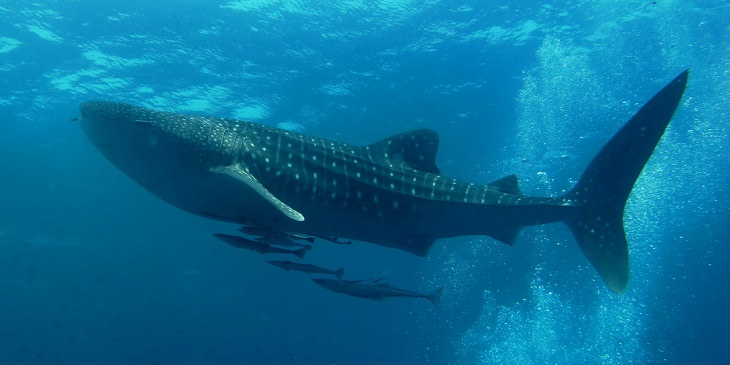
(By Abe Khao Lak, Wikimedia Commons)
The whale shark, along with the megamouth shark and the basking shark, is a filter-feeding shark, that has a large mouth and extremely small teeth. They swallow large volumes of water around schools of plankton, krill and small fish to feed. The whale shark is one of the largest creatures in the animal kingdom and the largest living non-mammal vertebrate.
They can be found in any and all tropical and temperate waters across the globe, especially off the coasts of South Africa, Australia, India, Indonesia, and some middle-eastern nations. Whale sharks are extremely peaceful and docile creatures, and in some places have even been known to let swimmers ride them and tourists feed them.